Maintaining correct tire inflation pressure is very important since it helps optimize tire performance and fuel economy while over-inflated tires are just as problematic as under-inflated ones.
In fact, driving with under-inflated tires is one of the biggest causes of tire failure, according to the National Highway Traffic Safety Administration.
Besides, under-inflated tires can cause many other problems such as wearing out more rapidly, handling poorly and reducing fuel efficiency.
In addition, over-inflated tires are more susceptible to damage from road irregularities, and this also creates a bumpier ride.
Overfilling your tires is just as dangerous as under-filling them, so it’s important you know what is recommended for your vehicle.
This article will give you everything that you need know about your recommended tire pressure. These include:
Buy Pressure Gauge at Amazon
Recommended tire pressure, where to find it?Since tire pressure is so important to your safety and your car’s overall performance, it is important to know which level of tire pressure is right for your vehicle.
In fact, how much air pressure your tires need depends on several factors, including the type of vehicle, the type of tire and the intended use of the vehicle etc.
Air pressure in tires is measured in pounds per square inch or PSI. You can find your tire pressure both inside your car and on the sidewall of the tire.
How to find recommended tire pressure inside your carYou could find the manufacturer’s optimum or recommended tire pressure for your car on a sticker in the door jam, or in your owner’s manual. Some car models even place the stickers on the trunk lid, in the console or on the fuel door. For best results, look for a placard on the inside of the driver’s door, like the example in the photo below.
How to find maximum tire pressure on the sidewall of your tiresSomewhere on the sidewall of your tire, just below the big, bold letters of the manufacturer, for example, you might have noticed the words ‘Max. Press. 35 PSI.’ (pounds per square inch).
Press. 35 PSI.’ (pounds per square inch).
That number tells you the maximum cold pressure needed for your tire to carry its maximum load.
Most typical tires require about 32 to 35 pounds per square inch (PSI) of air, says Rod Tate, owner of highly rated Colony One Auto Center in Stafford, Texas.
Large trucks require much larger tires with PSIs of 50 to 60. Heavy-duty vehicles can go even higher. For example, tire in the picture below requires 41 pounds per square inch of air.
However, the tire’s maximum pressure is NOT necessarily the most suitable pressure for every vehicle upon which the tire can be used (almost all vehicle manufacturers’ recommended tire inflation pressures are less than the tires’ maximum pressure).
You really should follow the recommended pressure printed somewhere inside your car or in the manual rather than the maximum pressure. In the next section, I will explain why.
Buy Pressure Gauge at Amazon
Why is maximum tire pressure not the best?If you insist on inflating your tires to the max PSI, there will be more likely that two things below will happen
Since tires inflated to the max cannot give as much on the sidewall, you might see superior cornering, but it could be at the risk of your braking threshold.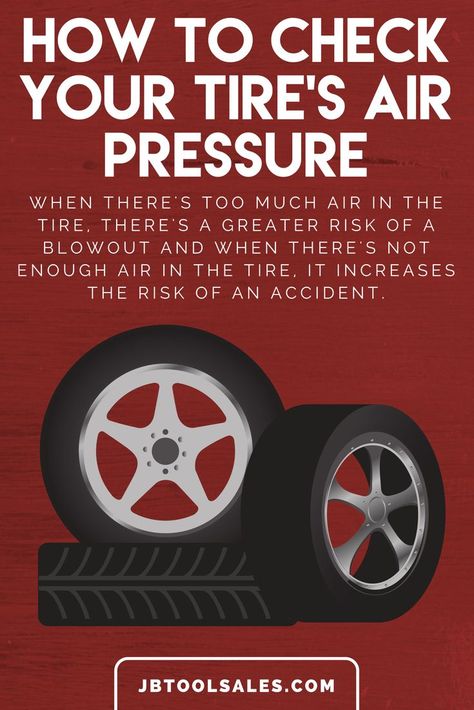 One quick corner and your back end could slide out.
One quick corner and your back end could slide out.
When your tires are inflated too much, the rubber rounds out at the top of the tire when you are driving, and the center will quickly wear out. You will also reduce your traction and you could even cause a blowout.
Therefore, maximum pressure is not the best, rather, recommended pressure is. I need to repeat here that the pressure listed on the sidewall is a maximum pressure only, but not a recommended pressure. Instead, you should use the air pressure recommended in the vehicle’s owner’s manual or tire information placard label.
How to check your tires pressure?Therefore, maximum pressure is not the best, rather, recommended pressure is. I need to repeat here that the pressure listed on the sidewall is a maximum pressure only, but not a recommended pressure. Instead, you should use the air pressure recommended in the vehicle’s owner’s manual or tire information placard label.
Instead, you should use the air pressure recommended in the vehicle’s owner’s manual or tire information placard label.
After knowing the most appropriate pressure for your car tires, you should check whether your tires have such pressure. In addition, checking the pressure of your tires regularly is one of the most important – and most often overlooked – regular maintenance that you should do to ensure your safety and quality of your driving. Monitoring the amount of air in your tires will let you know if you have a small leak and can help you avoid an unexpected flat tire.
Frequently checking your PSI becomes even more important in the fall and winter, when outside temperatures drop and weather conditions fluctuate causing your tires to lose air more quickly. Generally speaking, your tire will gain or lose one PSI for every 10-degree change in temperature, which means if you have a sudden drop of 30 degrees, you could lose three PSI overnight. If your tires were already low, this could cause tire damage, steering problems or even a flat tire.
Some experts recommend that you should check the air pressure every time you refuel; others say once a month is sufficient.
How to check tire pressure properly? Checking tire pressure is easy. You can do it right at home or at the gas station. Just be sure you check the pressure when your tires are cold, or have not been driven in several hours. This will give you the most accurate reading.
The most important piece of equipment you need is an accurate tire pressure gauge. You can find battery-operated digital gauges, or more traditional stick-type gauge found at most gas stations. A good gauge should not set you back more than $15 – a worthwhile investment for a longer life for your tires.
Buy Pressure Gauge at Amazon
Make sure you have your manufacturer’s PSI handy when you are checking your tire pressure, and then follow these steps:
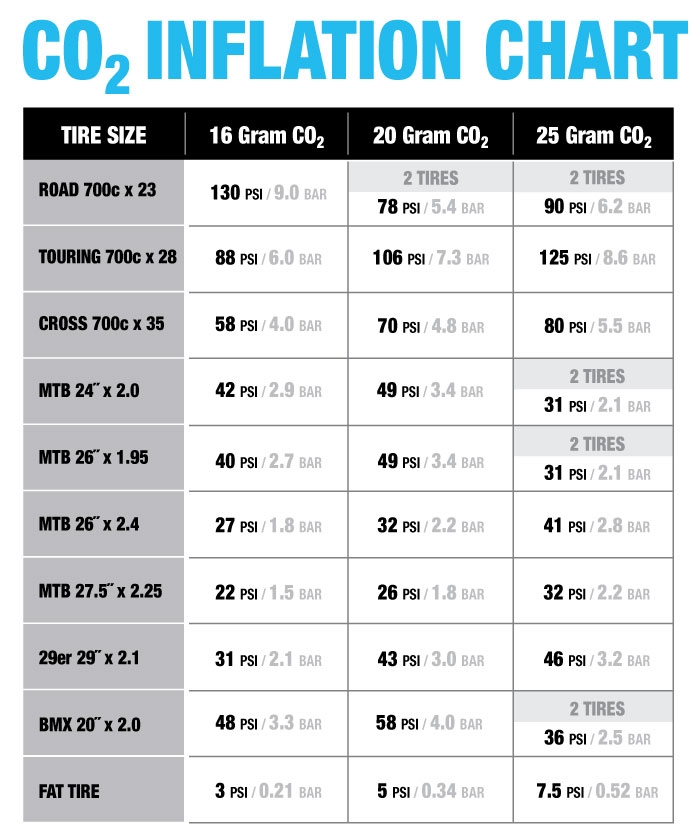
By checking tire pressure once a month, you will get a good idea how they are performing. If your tires are fairly new and continue to leak air, you should consult your dealer or mechanic. You may have a faulty valve or other damage that is difficult to detect which could unfortunately result in the need to replace the tires completely. But with proactive maintenance, you could catch an issue before it becomes a problem, and just end up needing a small repair.
But with proactive maintenance, you could catch an issue before it becomes a problem, and just end up needing a small repair.
Often, it is hard to spot an under-inflated tire until it is too late – in other words, it is completely flat. Of course, you could carry a gauge around at all times to measure the pressure, but that is not exactly convenient. Instead, watch for these signs and symptoms of tires that are under-inflated.
When your tires are under-inflated, your ride can be less smooth than usual. You may even find that it takes longer to brake.
When a tire is not inflated properly, it wears down more quickly. If you notice that one or all of your tires are wearing out faster than usual, it may be because they are under-inflated.
Tires that are under-inflated can make your vehicle quiver and shake, which is not a pleasant driving experience.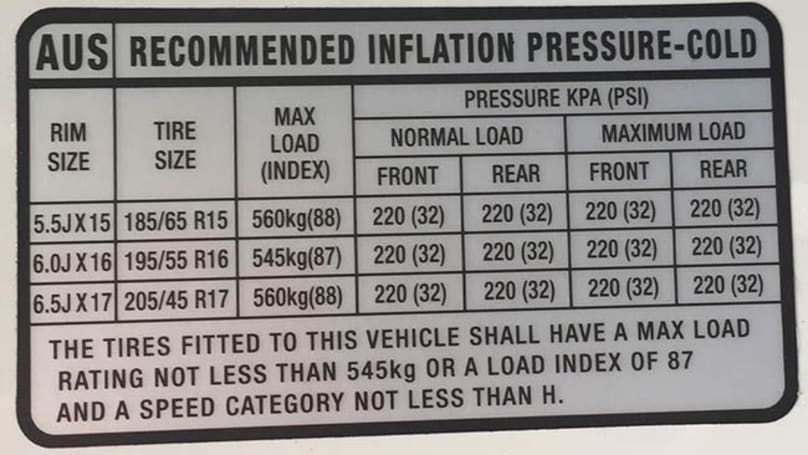 Under-inflation can even cause tires to become misaligned, with comes with it is own variety of problems.
Under-inflation can even cause tires to become misaligned, with comes with it is own variety of problems.
These are all things that you need to know about recommended pressures of your car tires. After reading this article, you will never confuse about the right pressure of your tires and will know how to check it.
Please share your ideas with me if you have other tips for this.
The recommended tire pressure is the pressure established by the manufacturer of your car as the optimal air pressure for your tires. Running your tires at the correct pressure is important because it keeps you safe, cuts down your gas bill, and makes your tires last longer. Each vehicle has its own specifications for tire pressure, but most fall between 28 and 36 PSI (pounds per square inch).
Be careful not to confuse the recommended pressure with the maximum pressure. The recommended pressure is the one you should use when filling your tires, and, as explained above, you can find on your doorjamb or in your owner’s manual. The maximum pressure, on the other hand, is usually stated on the sidewall of the tire itself in small print near the tire’s bead (where the rubber abuts the rim). This measurement is provided by the tire manufacturer rather than the car manufacturer and is the maximum amount of pressure the tire can safely withstand.
The recommended pressure is the one you should use when filling your tires, and, as explained above, you can find on your doorjamb or in your owner’s manual. The maximum pressure, on the other hand, is usually stated on the sidewall of the tire itself in small print near the tire’s bead (where the rubber abuts the rim). This measurement is provided by the tire manufacturer rather than the car manufacturer and is the maximum amount of pressure the tire can safely withstand.
Your tires’ max PSI almost always exceeds the recommended pressure. It isn’t advisable to fill your tire to this pressure for everyday driving. At max PSI, your car does not handle as well, braking is impaired, and you could risk dangerous blowouts. Over-inflation can also cause the center of your tire’s tread to wear out prematurely and reduce the lifespan of your tires. You may want to use the max pressure on a temporary basis if you are hauling especially heavy load or towing something.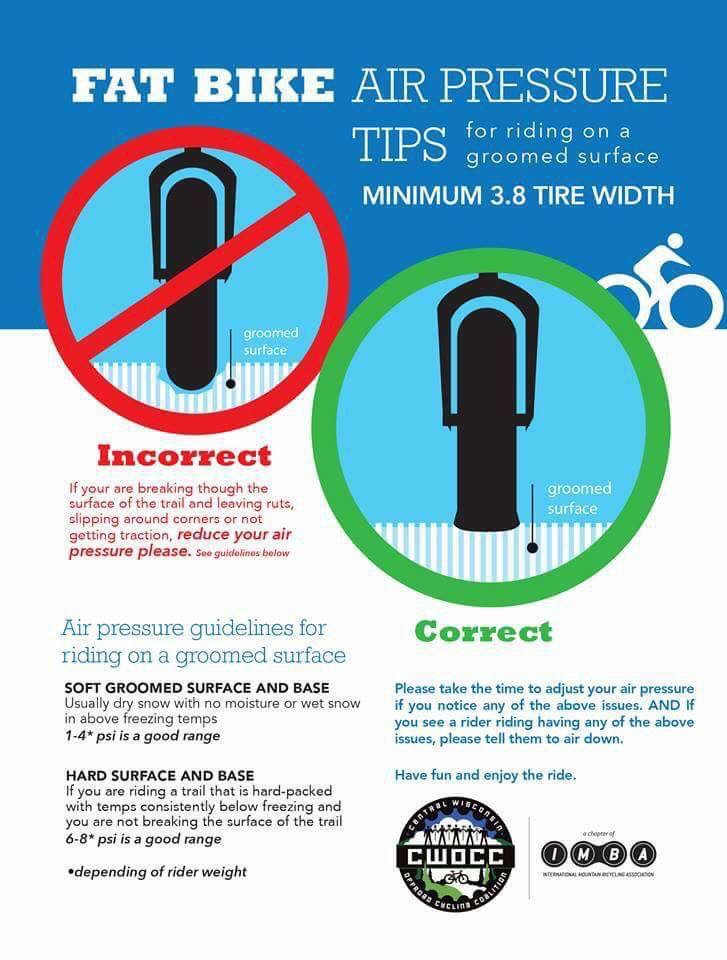
Most manufacturers do not state a minimum tire pressure, per se. The recommended value is the amount of air that a tire needs for a car to handle properly and safely, and anything under that value is not recommended, so functionally the optimal value is also the minimum. Under U.S. law, vehicles are required to be equipped with tire pressure monitoring systems (TPMS) that warn the driver when tire pressure falls below 25 percent of the recommended PSI. This is considered severe under-inflation, but less drastic pressure drops are still considered moderate or mild under-inflation, and they and can still have negative consequences.
If your tires are inflated to a pressure that is below the recommended PSI (as shown in the manual or on the driver’s side doorjamb), your car will not operate safely. Under-inflation can cause the tire to heat up excessively, which can make the tread pull away from the body of the tire. If this happens on the highway, it could lead to a blowout and a serious accident. There are also financial reasons for making sure your tires aren’t under-inflated. A low tire has more rolling resistance, which means the car has to work harder to move down the highway and consumes more fuel. Well-inflated tires are going to save you money at the pumps. Low tires also wear more quickly and unevenly, so you will have to replace them more often.
If this happens on the highway, it could lead to a blowout and a serious accident. There are also financial reasons for making sure your tires aren’t under-inflated. A low tire has more rolling resistance, which means the car has to work harder to move down the highway and consumes more fuel. Well-inflated tires are going to save you money at the pumps. Low tires also wear more quickly and unevenly, so you will have to replace them more often.
A tire pressure monitoring system (TPMS) uses either a direct sensor inside your valve stem or a combination of both software and other existing sensors in your vehicle to let you know when your tire pressure is outside of a safe range of pressures. If the pressure falls below the legally specified limit (25% of recommended pressure) an indicator light shaped like the letter U with an exclamation point inside it (representing the cross-section of a tire) will light up on the dashboard. When you see this TPMS light on you should immediately check your tire pressure and make any necessary adjustments.
When you see this TPMS light on you should immediately check your tire pressure and make any necessary adjustments.
If you have further questions about tire pressure or any other aspects of your tires, find your nearest tire dealer to get some advice.
Tire pressure in a Chevrolet Cruze, like in other cars, strongly affects not only handling, but also tire wear, running gear life and fuel consumption. Constant and accurate pressure control will save you from many troubles, and it is advisable to carry it out at least once a week. We will consider all the subtleties of this issue today.
Contents
2.2 bar is the optimum pressure.
Regardless of the tire size and engine, vehicle modification and body type, it is recommended to maintain the standard pressure in the wheels of the Chevrolet Cruze within 220 kPa (2.2 bar) or 32 psi. This applies to both the front and rear wheels of the vehicle.
It must be remembered that the pressure is checked only on cold rubber, since when heated, the pressure gauge will increase by about 0.2 bar.
The spare tire must be maintained at the same pressure as the stock tires.
The pressure in the full size spare tire should be kept within the same limits, and the pressure in the temporary spare should be maintained at 420 kPa (4.2 bar) or 61 psi. In order not to get confused in different pressure designation standards, below is a table with which it is easy to adapt the required pressure to the designations on the scale of the pump, pressure gauge or compressor. nine0003
Conversion of pressure parameters to various units.
However, there are cases when it is possible and necessary to deviate from the norms specified by the manufacturer.
Table on body.
The Chevrolet Cruze Owner's Manual indicates that the minimum fuel consumption is achieved at a pressure of 270 kPa, but it must be taken into account that the car will become much stiffer and the load on the suspension elements will be slightly higher. nine0003
And besides, with high pressure and operation for a long time, uneven tire wear may occur - the middle part of the tread will wear out much more intensively than . Maintaining such pressure makes sense only when driving on the highway at high speed, and in the city and on a bad road, of course, you need to adhere to the ratings indicated by the manufacturer.
Tire pressure must be increased when the vehicle is loaded. nine0003
Another indication for increased pressure is vehicle loading.
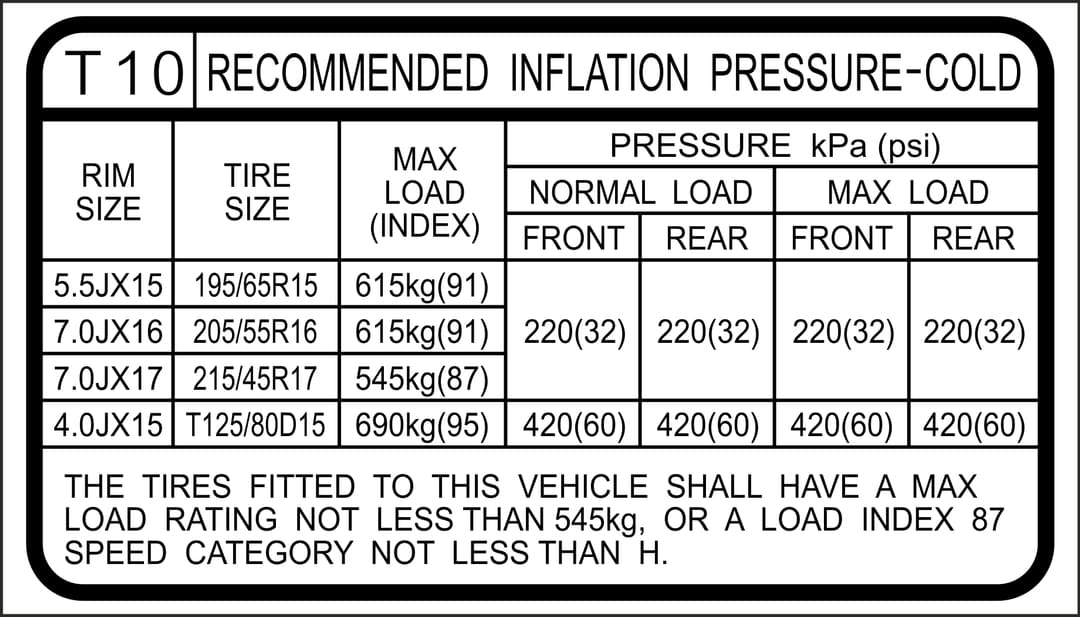
The factory allows pressure increase to save fuel on a good road only when there are no more than 3 passengers in the cabin, but at the maximum load (five passengers plus full luggage), the pressure in the front and rear wheels should be at the level of 220 kPa .
A quick guide to Chevrolet Cruze tire pressure is pasted on the front of the driver's door, its photo is shown above, and in other cases it is necessary to be guided by the above data. Check tire pressure as often as possible and smooth roads! nine0003
in our article we discuss how to choose a compressor for car service, what types of compressor for car service are and in general, we advise how to choose a compressor for car service that will be suitable for you. at least once the question arose how to choose a compressor for a car service for any owner of a car repair shop. Well, before we can answer the question of how to choose a compressor for a car service, we must ask ourselves a few basic questions. nine0003
at least once the question arose how to choose a compressor for a car service for any owner of a car repair shop. Well, before we can answer the question of how to choose a compressor for a car service, we must ask ourselves a few basic questions. nine0003
The air compressor is an indispensable tool in many industries, from automotive to woodworking. However, no compressor offers a one-size-fits-all solution. The best choice depends on your type of work, what you will use the compressor for and other characteristics.
That's why workshop owners cut their work short when looking for the right compressor. Repair shops rely on compressed air for many different tasks, using it to paint cars, inflate tires and sanders, die cutters and grinders. Without an optimal compressor, bodyshops cannot achieve the efficiency and results they need to run a successful business. nine0003
and as for the question of how to choose a compressor for a car service - not always the easiest decision, but it is one of the most important decisions a workshop can make. Luckily, we're here to help you ask the most important questions and find the best compressor for your business.
Luckily, we're here to help you ask the most important questions and find the best compressor for your business.
🔰 HOW MUCH SHOULD MY COMPRESSOR BE?
🔰 HOW MUCH PRESSURE DO I NEED?
🔰 An example of a reciprocating compressor. nine0028
🔰 WHERE DO I PLAN TO STORE COMPRESSOR ?
🔰 how to choose a compressor for a car service for painting?
🔰 Determine the need for compressed air
🔰 Determine the necessary air pressure
🔰 Check your electric system How much should my compressor be?
The size of an air compressor can be measured by the volume of air it consumes in one minute, usually expressed in cubic feet per minute (or CFM). nine0137 The volume required to complete a single task varies greatly, with some common functions requiring as little as 2.5 cu. Feet per minute, while others require up to 20 cu. Feet per minute. In general, heavy tasks such as painting and sanding require more volume, while lighter tasks such as cleaning and inflating tires require less volume.
nine0137 The volume required to complete a single task varies greatly, with some common functions requiring as little as 2.5 cu. Feet per minute, while others require up to 20 cu. Feet per minute. In general, heavy tasks such as painting and sanding require more volume, while lighter tasks such as cleaning and inflating tires require less volume.
Air compressors are manufactured for various pressures. Choose the correct pressure range that best suits the requirements of the devices you may have in your store. Most pneumatic tools require 90 psi. Spray guns may require 35 to 60 psi. Tire machines may require 130 psi. Load jacks may require 165 psi. Typical maximum operating pressures for bodyshop air compressors are available at standard pressure settings of 115 psi (or psi) or 145 psi or 175 psi. nine0137 Each pressure change has an "on" pressure at which air production starts and an "off" pressure at which air production stops. The differential is typically ~20 psi. Select the optimal pressure to maintain the highest pressure level required in the store.
The differential is typically ~20 psi. Select the optimal pressure to maintain the highest pressure level required in the store.
When you don't know exactly how to choose an auto repair compressor, note that air compressors produce more cfm at lower pressures and less cfm at higher pressures. As such, it makes sense to choose the right pressure for your needs, as CFM is what drives your instruments. If you have a tire machine that requires 130 psi, for example, while any other air tool only requires 90 psi, you should purchase an air compressor that can pressurize air up to 145 psi or more, and use a pressure regulator to feed the air tool at 90 psi.
Air compressors can be placed in several locations, but there are some placement restrictions that each user must follow. You want the room temperature to remain stable, because insufficient ventilation will cause the room to overheat and forcibly turn off the compressor.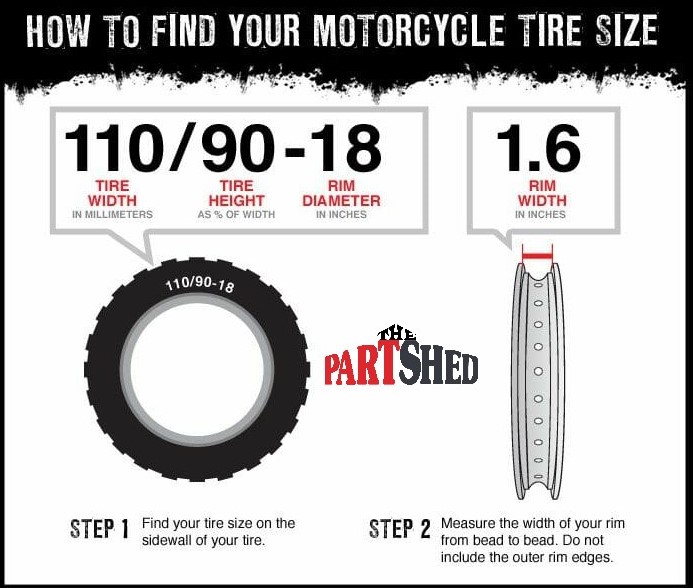 nine0003
nine0003
Ideally you want to leave about 36 inches of space around the compressor so it can breathe and be able to crouch to access components for maintenance. The temperature in the compressor room should match the ambient temperature and ideally not exceed 104°F. Any additional restrictions specific to your compressor will be included in the user manual.
Air compressors are especially valuable when painting cars. As stated above, having the right air volume (cfm) and pressure (psi) is key when choosing the right air compressor. But air quality is critical to avoid rework and ensure the best paint quality. Water-based paints are more sensitive to moisture than solvent-based paints. Airline water can ruin your paint job and damage your air tools. So, it's very important to make sure you have a proper dehumidifier and built-in filtration to remove moisture, dirt and oil from the air stream to protect your equipment and finishes. nine0003
nine0003
The first question you should ask after choosing a car service compressor is how much compressed air you need for the job. The volume of compressed air supply is usually impossible to determine exactly, but you can estimate the amount needed, taking into account fluctuations as the store expands.
Compressed air supply is measured in cubic feet per minute or standard cubic feet per minute. Every air compressor system has a specific SCFM capacity and every air tool has a specific SCFM range for which it is built. To determine the air requirement for your entire workshop, you should simply add up the SCFM requirements for each tool that you may need to use at the same time in your garage. If you cannot find these numbers printed on the instruments themselves, you can find them on the websites of the respective manufacturers. nine0003
In addition to knowing how much air you need, you also need to know how much air pressure you need.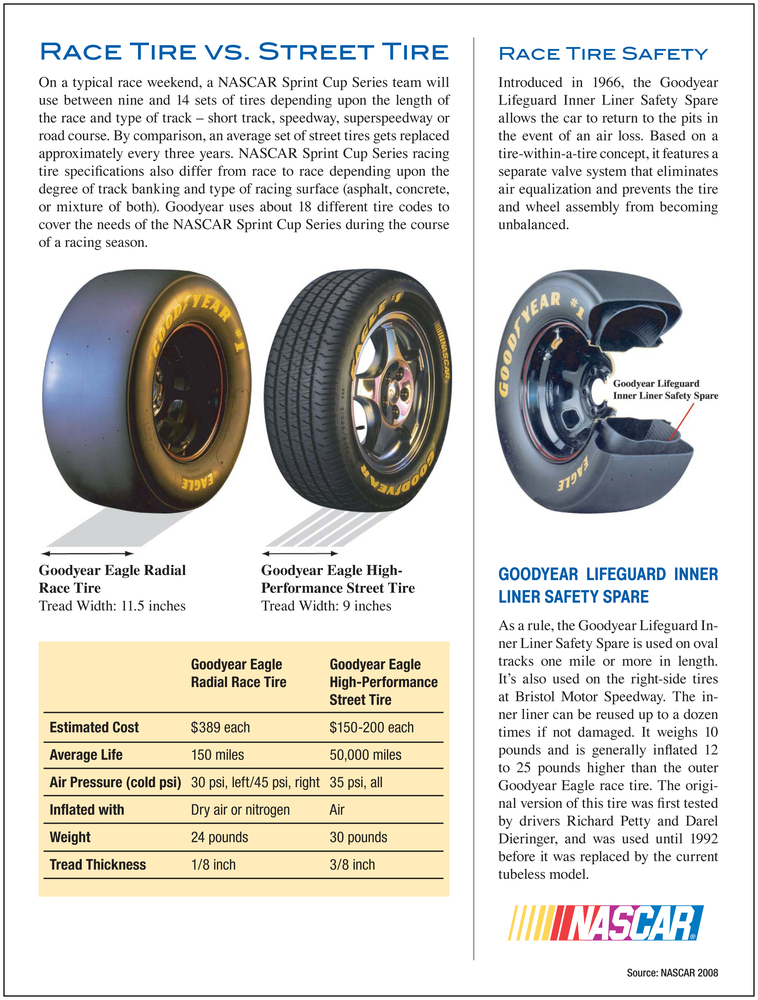 It is measured in pounds per square inch or psi and the required pressure is called working pressure.
It is measured in pounds per square inch or psi and the required pressure is called working pressure.
To determine the operating pressure, you need to find out what operating pressure is required to operate your tools at the most intense pressure. Find your air tool with the maximum working pressure you need and make sure the air compressor you purchase will provide it. You don't have to worry about lower air pressure for your lower pressure tools because they need to be fitted with regulators so they can work properly in high pressure systems. nine0003
Finally, before buying a new air compressor, you must make sure it is compatible with your electrical system. Larger air compressors require more power to operate - in fact, your compressor is probably the biggest consumer of energy in your store. But the size of the air compressor you can place will depend on your available power source.
To find out what capacity your facility offers, consult an electrician who will advise you on the maximum capacity of your electrical service.